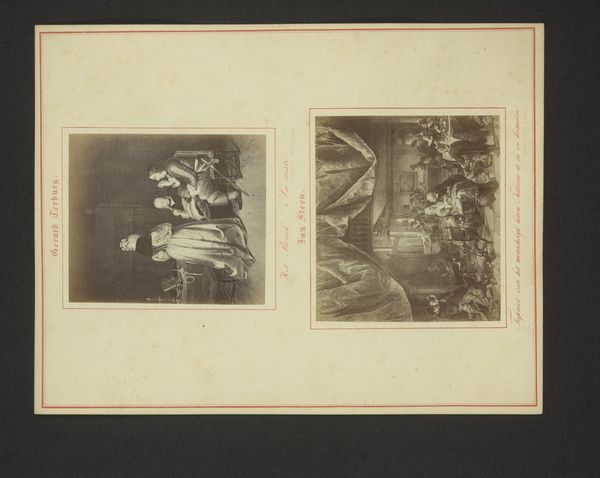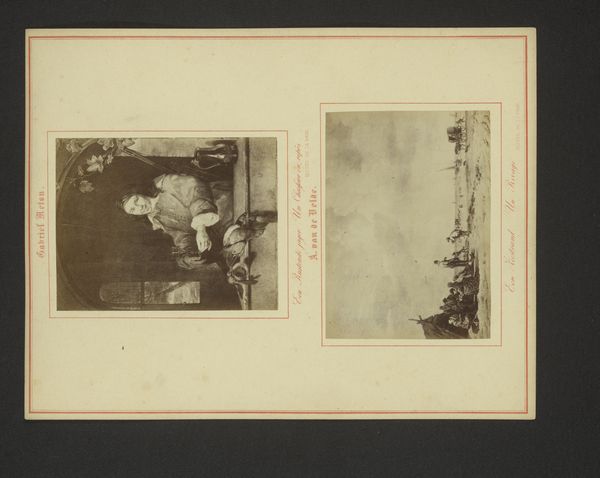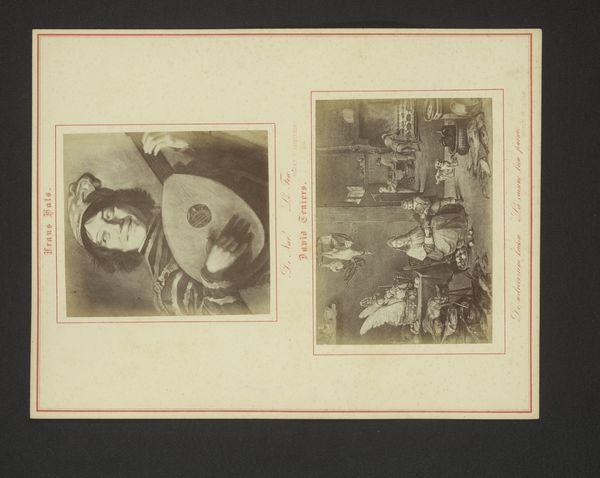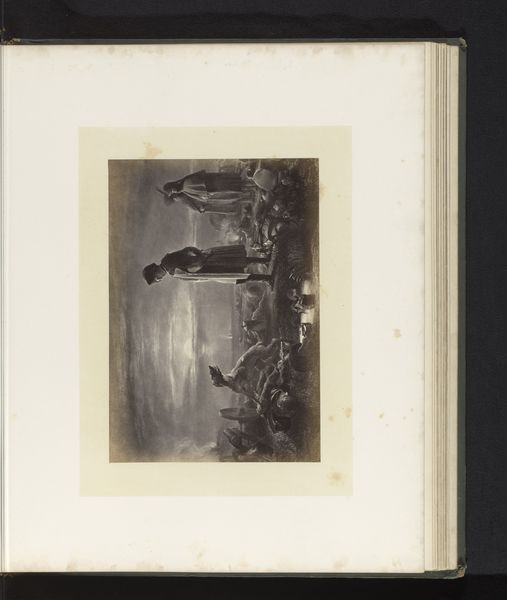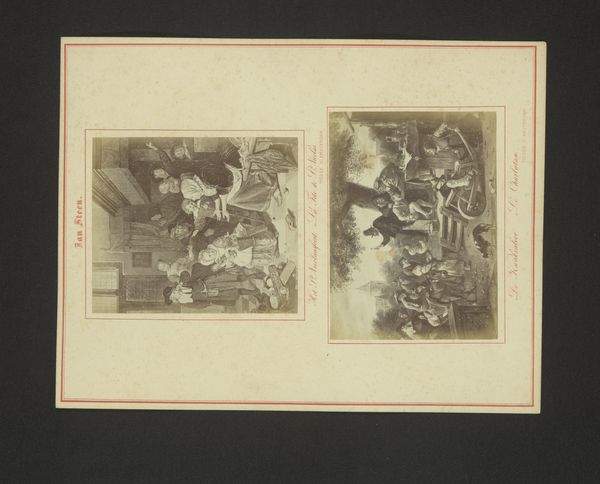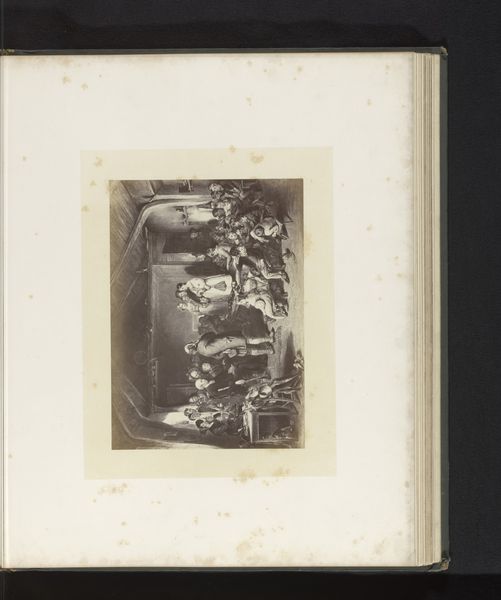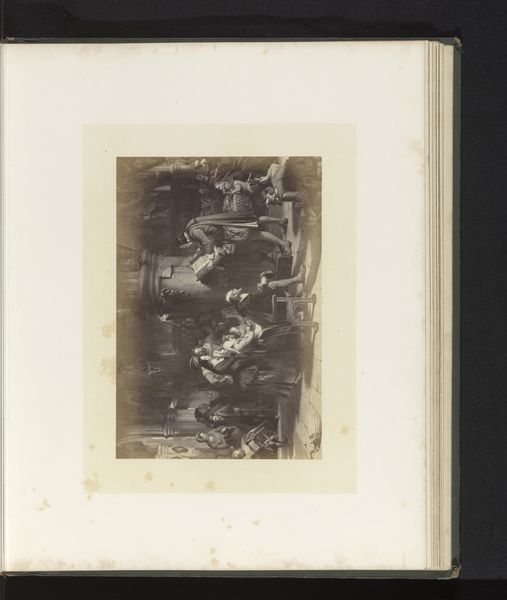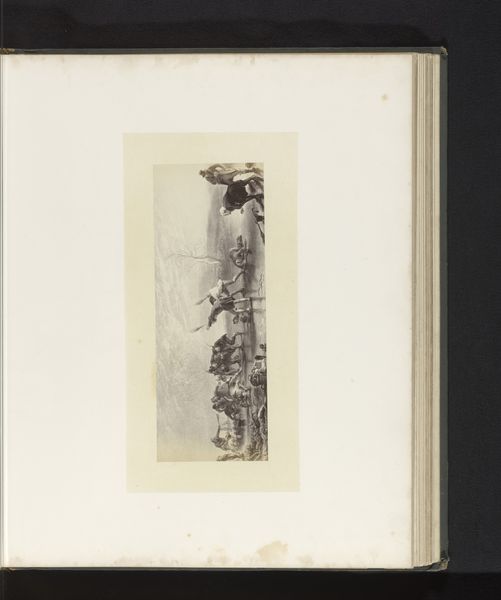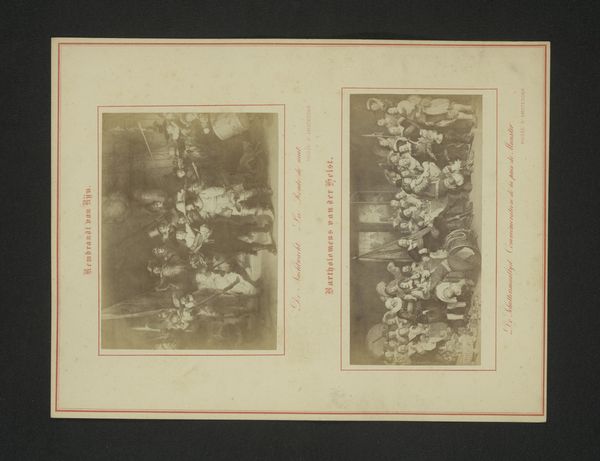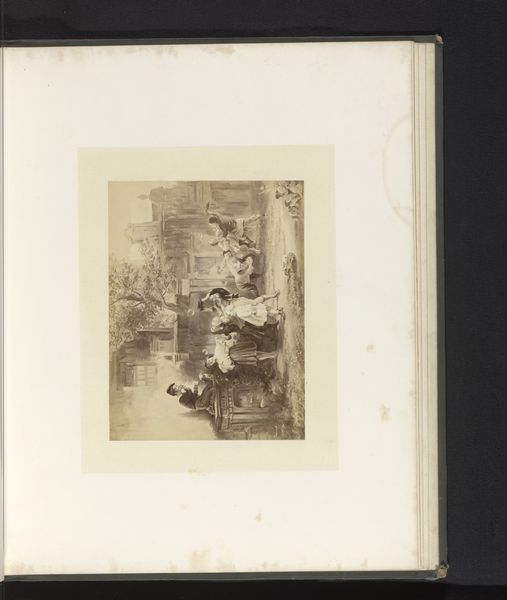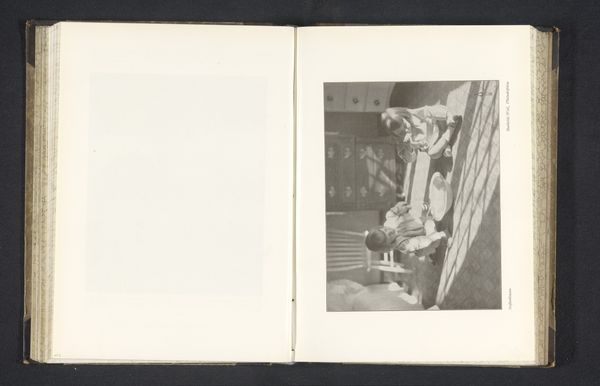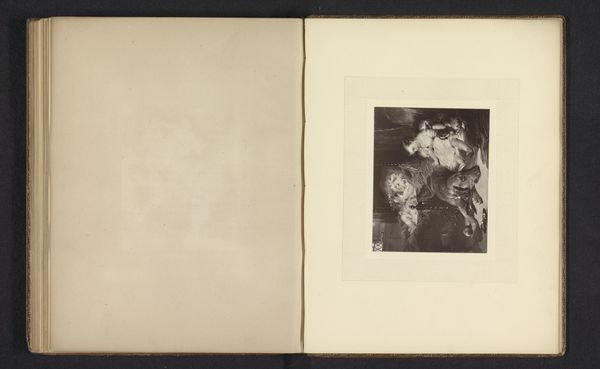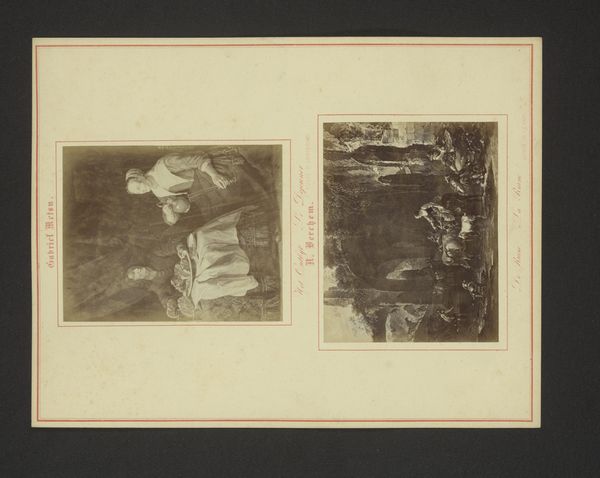
Fotoreproducties van Het loflied van Simeon door Rembrandt van Rijn en van De anatomische les van Dr Nicolaes Tulp door Rembrandt van Rijn c. 1866 - 1874
0:00
0:00
print, photography, gelatin-silver-print
#
portrait
#
still-life-photography
#
dutch-golden-age
# print
#
photography
#
gelatin-silver-print
#
history-painting
Dimensions: height 121 mm, width 88 mm, height 89 mm, width 131 mm
Copyright: Rijks Museum: Open Domain
Curator: This is a gelatin silver print from around 1866 to 1874, residing here at the Rijksmuseum. It presents photographic reproductions of two iconic Rembrandt paintings: "The Song of Simeon" and "The Anatomy Lesson of Dr. Nicolaes Tulp". Editor: My first impression? These photographs give the originals an ethereal, ghostly vibe. Especially with the lighting, it's like these masterpieces are shimmering from another dimension. Curator: That’s quite perceptive. In its historical context, this work provides crucial insight into the dissemination and preservation of art. Photography offered a way to democratize access to images that were typically only viewable by the wealthy or those with access to major collections. Consider the impact of that kind of distribution! Editor: It's almost as if photography "freed" the images, even though something, inevitably, is lost in translation. Like a band covering a classic song, maybe? What we're left with is something entirely different—an echo or a variation on a theme. Do you think these were made for archival purposes, or did they function more as artworks themselves? Curator: Probably both, I'd wager. As reproductions, these photos were a practical means of documentation, but their very existence also challenged notions of artistic authenticity. Were they art, copies of art, or something else entirely? Editor: Makes you think about art’s afterlife, doesn't it? How a painting can continue rippling outwards through different mediums, interpretations. This image almost has a third life of its own, because of that duplication. Curator: Absolutely. Furthermore, the piece reflects broader social dynamics of the period: scientific advancement through photography and its interaction with artistic legacy. These were, of course, tied to social structures regarding education and the consumption of cultural capital. Editor: Looking at it now, it’s interesting how our current digital age keeps spinning this idea further; so many copies of copies, until an artwork mutates into an unrecognisable form of itself... It's fascinating to see its genesis in something as grounded as a physical print. Curator: Precisely! This photograph then allows us to reflect on the constant negotiation of artistic and cultural meanings across time. Editor: Absolutely. It makes you want to dive back into the originals and see what further dimensions these photographic after-images can unlock.
Comments
No comments
Be the first to comment and join the conversation on the ultimate creative platform.
